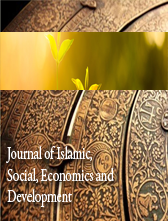ELEMENTS OF AL- GHAFLAH IN RELATIONS TO ONLINE GAME ADDICTION IN RELATIONS TO AL-GHAFLAH (HEEDLESSNESS); A CASE STUDY ON UNIVERSITY STUDENTS
Abstract
The world has witnessed significant detrimental effects of online gaming addiction to many individuals after the Era of Convergence. From playing game on console to playing online, the game industry evolved to be billion-dollar industry that lured many players to commit themselves that has resulted in addiction that increase over the years especially after the offline game gone online after the Era of Convergence. As much as the western world acknowledges the negative ramification of gaming addiction, the Muslim world recognizes it even more as having damaging effects on any individuals if it is related to the therotical concept of Al-Ghaflah (Heedlesness) in Islam. 82 university students were interviewed to determine the possible causes of heedlessness that can be found in prolong game play, the mechanics of game, and satisfaction found through escapism in this activity. The analysis indicated that gamers who played found satisfaction through dependency on game and needed to find greater achievement in play, causing them to focus on this gaming activity. The prolong addiction is to a certain extend is conflicting and controversial to the life of Muslims who wasted time on heedless activity that is delusional and swayed them from the remembrance of Allah.













